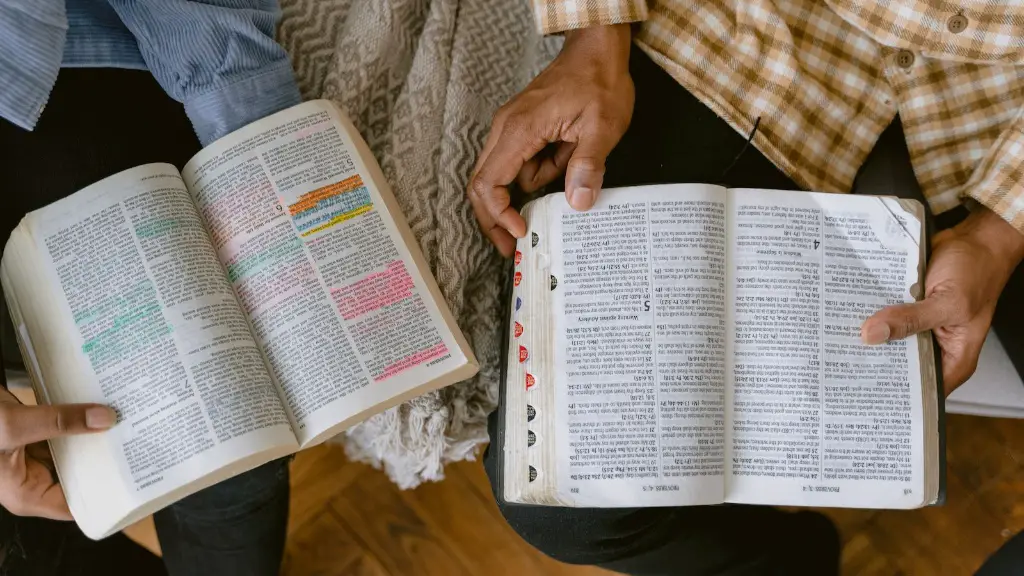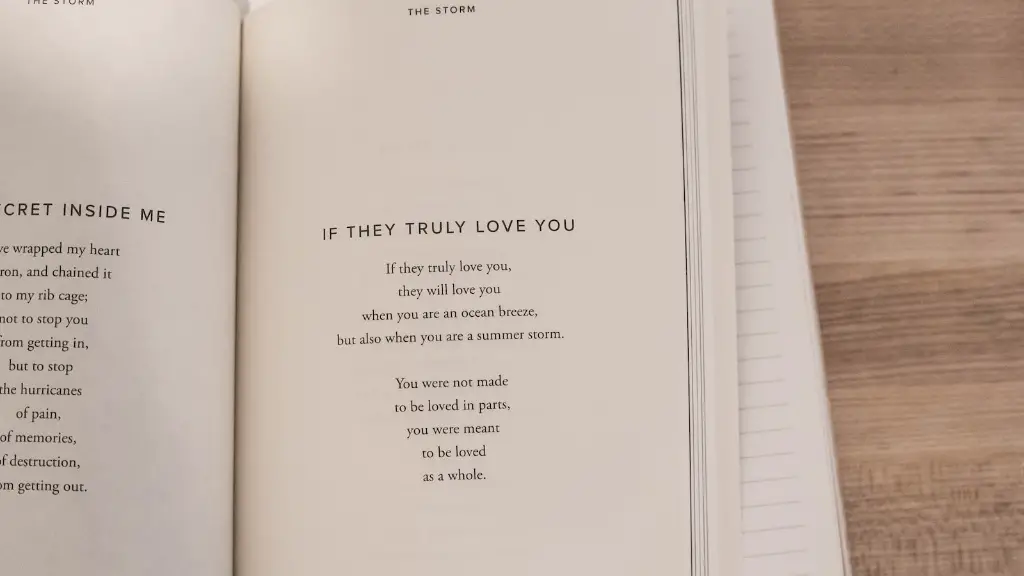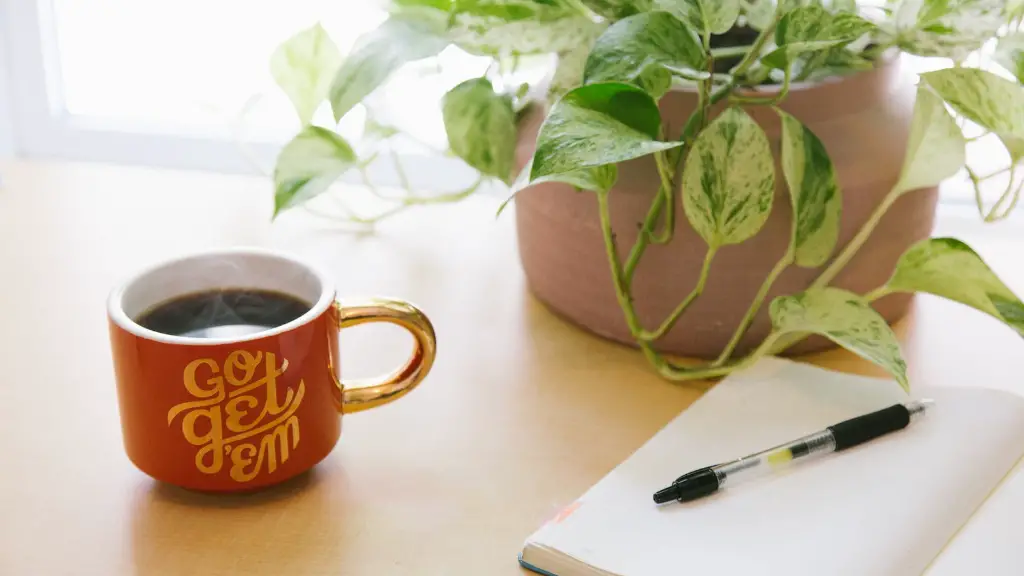Rhythm and Meter Basics
Rhythm and meter are key elements for poets to incorporate in their work. Poetry is composed of words arranged into patterns and when it comes to rhythm and meter, both are measured in feet. Understanding how to measure meter in poetry is critical to properly compile and express a poem.
The basics of rhythm and meter are as follows. Rhythm is the overall flow created by the way words and syllables are arranged in patterns. Meter is a poetic device it creates regular, measured patterns in lines of poetry. It’s typically constructed by arranging syllables into different arrangements known as feet. A foot is a combination of two or more stressed or unstressed syllables, and these together form the meter of the line.
The way feet are arranged, will determine the type of meter used in a poem. There are two types of feet – stressed and unstressed. Stressed feet are pronounced with more energy and emphasis, while unstressed feet are pronounced in a softer and more relaxed manner.
To make it easier to remember, unstressed feet are also known as light feet while stressed feet are referred to as heavy feet. By arranging stressed feet and unstressed feet together, poets are able to create different combinations that create feel and rhythm in their work.
Meter Examples – Trochee and Iamb
Two examples of meter in poetry are trochee and iamb. A trochee is created by an unstressed syllable followed by a stressed syllable eg ‘DA da’ (think of the ‘da’ as the sound of a drum). An iamb is created by a stressed syllable followed by an unstressed one eg ‘da DA’.
This alternating pattern of weak and strong syllables is what helps to create rhythm in a poetic line. Examples of trochee and iamb can be seen in poems such as ‘The Owl and the Pussy-cat’ by Edward Lear and Robert Frost’s ‘Stopping by Woods on a Snowy Evening’.
Typically, trochee is written in a more heightened tone, while iamb reflects a more relaxed and gentler tone. Trochee is perfect to use when a poet wishes to express a sense of drama or emotion, while iamb can be used to add a softer, more introspective feel.
Other Types of Meter
In addition to trochee and iamb, there are other types of meter that poets may use. These include spondee (two stressed syllables), anapest (two unstressed syllables followed by a stressed syllable) and amphibrach (an unstressed syllable followed by a stressed syllable and then an unstressed syllable).
These meters are used to bring life to a poem, providing emphasis and rhythm to words. It is also important to note that no single type of meter should be used throughout an entire poem. Rather, poems should contain a mix of different meters to create a unique sound and style to a poem.
Measuring Meter in Poetry
Now that we understand the basics of rhythm and meter in poetry, let’s look at how to measure meter in poetry. To measure meter in poetry, poets need to count the number of syllables in a poetic line. Generally, a poetic line is composed of ten syllables and is known as a pentameter.
By counting the number of syllables in a line, poets will be able to determine the type of meter used in that line. For example, if a poet counts three unstressed syllables followed by a stressed syllable, the poet knows that the line has an anapest meter.
Variety in Meter is Key
Variety in meter is key when it comes to composing poetry. By varying the types of meter used, poets can create an enjoyable and captivating read for their audience. The last line of a poem, known as the end-stopped line, is typically used to bring emphasis and emotion to the poem.
Typically, an end-stopped line marks the end of a stanza, or the end of a thought, phrase or idea. In addition, varying the mood and rhythm of meters throughout a poem will make the poem more pleasurable to read while also conveying the poet’s intended message or intent.
Speeding Up and Slowing Down in Poetry
Another way to add variety to poem’s meter is through speeding up and slowing down of poetic lines. By using rhythmic devices such as anacrusis, poets can create a sense of motion in their poem, whether it’s to emphasize their point or to draw the reader further into their work.
Anacrusis is achieved by stripping away one or more unstressed syllable at the start of a line; while on the other hand, adding additional stressed or unstressed syllables at the end of a line will create a slower feel. This can be used to create a sense of anticipation, or to provide closure.
Using Meter in Poetry
Furthermore, poets can also use meter to create contrasting effects. One way to do this is by arranging syllables to create a feeling of tension in their poem. This technique is known as rhetorical structure and it is used by poets to create a sense of unease and discomfort in their readers.
By using this method, poets can create an opposing feeling in their readers, thus creating tension and making the poem more engaging and thought-provoking.
Recognizing Meter in a Poem
Finally, it is important for poets to recognize where meter is used in a poem. When poets recognize metrical patterns, such as iambs and trochees, they will be able to decipher the basic structure of the poem and gain insight into the poet’s intention.
In particular, recognizing the end-stopped line is crucial as it is typically where a poet injects character and emotion in their work. With this knowledge, poets are able to use meter to create a captivating poem that will leave a lasting impression on their readers.
Comparing Meter Across Different Poems
In order to understand a poet’s intention and compare the effectiveness of the meter they use, it is important to look at the various poems produced by various poets. By reading each poem and analyzing the meter used, poets can gain a better understanding of the power of meter in poetry.
In particular, poets should pay attention to the way the chosen meter is used to add emphasis and flow to a poem. For example, does the meter speed up in certain parts to create tension? And does the meter slow down in other parts to create a more relaxed atmosphere?
Practicing Meter in Poetry
Once a poet has gained an understanding of meter, it’s time to practice. Poets can practice their meter by reading different poems aloud and focusing on their breath and the rhythm of their words. Additionally, poets can also try writing their own poems, playing with different phrase length, stresses and pauses when composing, as this allows poets to experiment and hone their skill.
Using Meter in Colloquial Expressions
When it comes to meter, it’s not only poems that demand attention. Clichés, common sayings, and proverbs all require the poet’s ear to appreciate the effortless beauty and perfect intonation. Pay attention to everyday expressions and common sayings, as it will help poets understand the power of meter in both written and spoken language.
Conclusion
To conclude, understanding how to measure meter in poetry is a key skill for any poet. By experimenting with different meters, poets can evoke certain emotions in their readers and bring their poetry to life. It is important for poets to remember that meter is often used for more than just rhythm – it is also used to convey meaning and provide context.
Remember, practice makes perfect, so take the time to read, practice, and experiment with the various meters to help you create memorable verses and stories.



